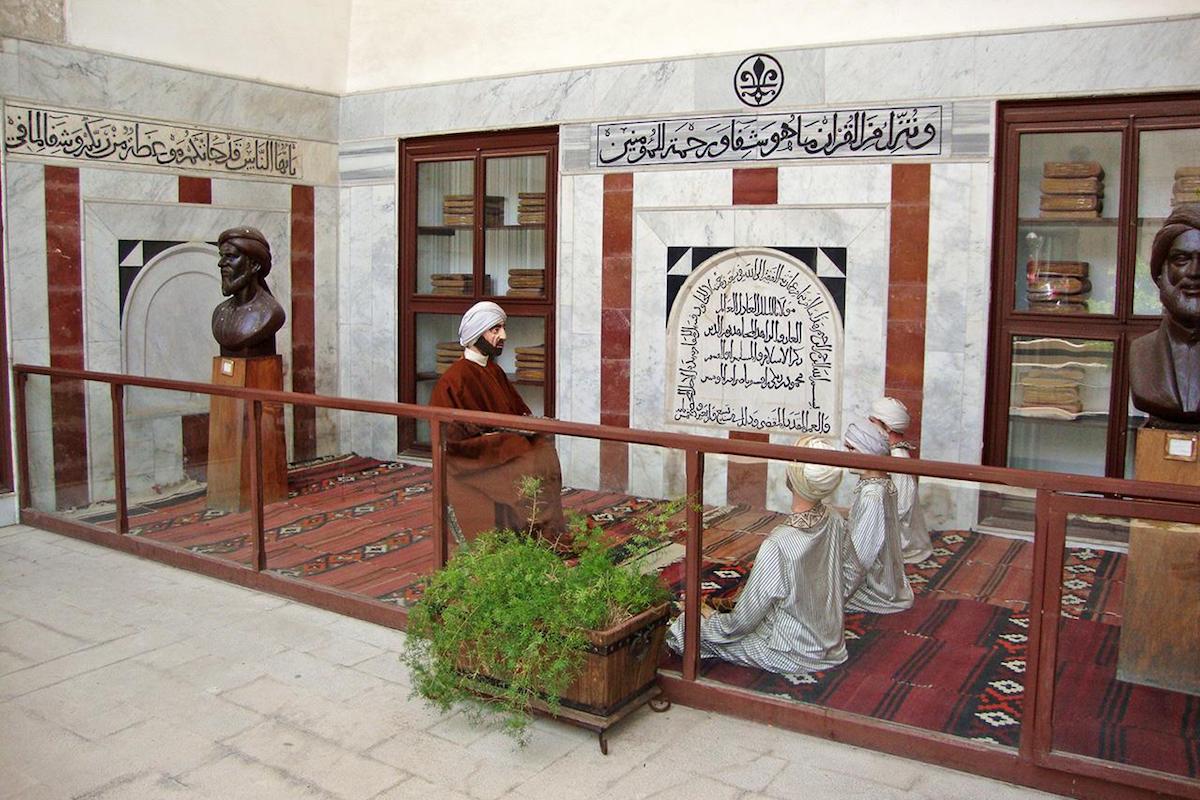Al-Bimaristan al-Nuri in Damascus: A Window Into Islamic Medical History: Nestled in the heart of Old Damascus lies a hidden gem of Islamic civilization: Al-Bimaristan al-Nuri. Once a renowned hospital and medical school, this medieval institution is not only a testament to the brilliance of early Islamic medicine but also a must-see for any visitor to Damascus who appreciates architecture, history, or science. Walking through its stone corridors and peaceful courtyards, one steps back into a golden era of knowledge, compassion, and innovation.
This article provides everything you need to know before visiting Al-Bimaristan al-Nuri—from its rich history to what to expect during your visit.
Quick Facts: Al-Bimaristan al-Nuri
| Feature | Info |
|---|---|
| Location | Damascus, Syria |
| Type | Medieval Islamic hospital (Bimaristan) |
| Founded | 1154 CE by Nur al-Din Zangi (famous Muslim ruler) |
| Historical Role | One of the most advanced hospitals of its era, offering free care |
| Architecture | Stone halls, central courtyard, domed chambers, inscriptions |
| Special Feature | Center for medical teaching and treatment, including surgery & pharmacy |
| Condition | Preserved as a historical site, though not active as a hospital |
| Current Use | Museum of Medicine & Science in the Arab World |
| Best Time to Visit | Year-round, located in Damascus Old City near al-Hamidiyah Souq |
What is Al-Bimaristan al-Nuri?
Al-Bimaristan al-Nuri (Arabic: البيمارستان النوري) was a historic hospital and medical school built in the 12th century by Nur ad-Din Zangi, the ruler of Damascus. The term bimaristan comes from Persian—bimar meaning “sick” and stan meaning “place,” making it one of the earliest institutional hospitals in the Islamic world.
This was no ordinary care facility; it offered free treatment to all patients, including mental health care—something that was rare even in the most advanced European cities at the time.
Historical Background
Built by a Visionary Ruler
Al-Bimaristan was commissioned in 1154 AD by Nur ad-Din, a leader known for his support of science, education, and justice. It was part of his broader vision of creating a strong, morally upright, and intellectually driven society. He founded mosques, schools, and hospitals, and Al-Bimaristan al-Nuri stood out as a beacon of this vision.
A Center for Medical Excellence
The hospital didn’t only treat the sick—it trained some of the most famous physicians in Islamic history. Its medical school attracted students from across the region and taught a wide range of disciplines including internal medicine, surgery, pharmacology, and mental health. It even had an extensive library of medical texts.
Ibn al-Nafis and the Legacy of Discovery
Although not confirmed to have worked specifically at Al-Bimaristan al-Nuri, Ibn al-Nafis, the famous physician who discovered pulmonary circulation centuries before William Harvey, was trained in Damascus and likely influenced by this institution.
Architectural Features
A Blend of Beauty and Function
Al-Bimaristan al-Nuri is a fine example of Ayyubid architecture. Despite its age and damage from earthquakes over the centuries, many of its beautiful features remain intact.
- Entrance portal: The main entrance is a masterpiece of Islamic stone carving, with geometric and floral patterns.
- Courtyard: The central courtyard is surrounded by patient rooms and was designed to bring light and air to the entire structure—an early understanding of hygiene and healing.
- Domed rooms: Rooms with domed ceilings served as operating rooms and consultation halls.
- Prayer niche (mihrab): Reflects the importance of spiritual healing alongside physical medicine.
Museum of Medicine and Science
Today, part of the building houses the Museum of Arab Medicine and Science, which showcases ancient surgical instruments, manuscripts, and medical tools used by physicians of the Islamic Golden Age.
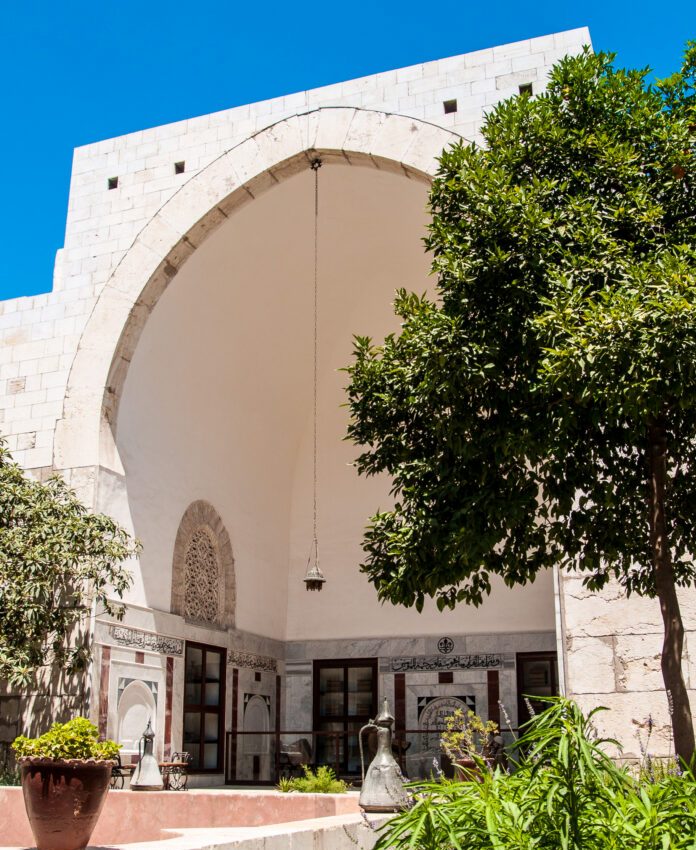

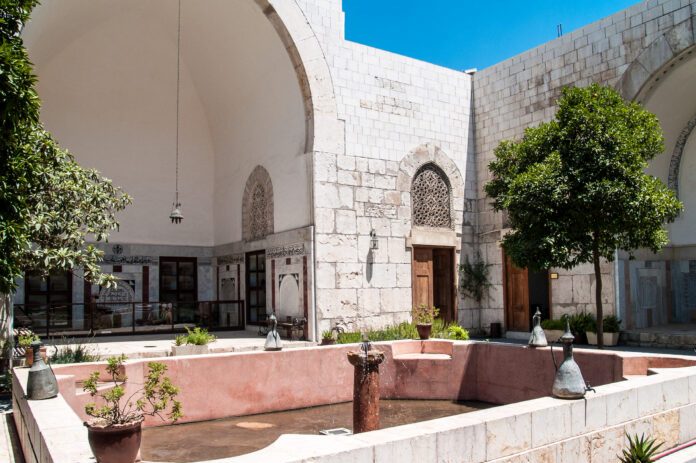
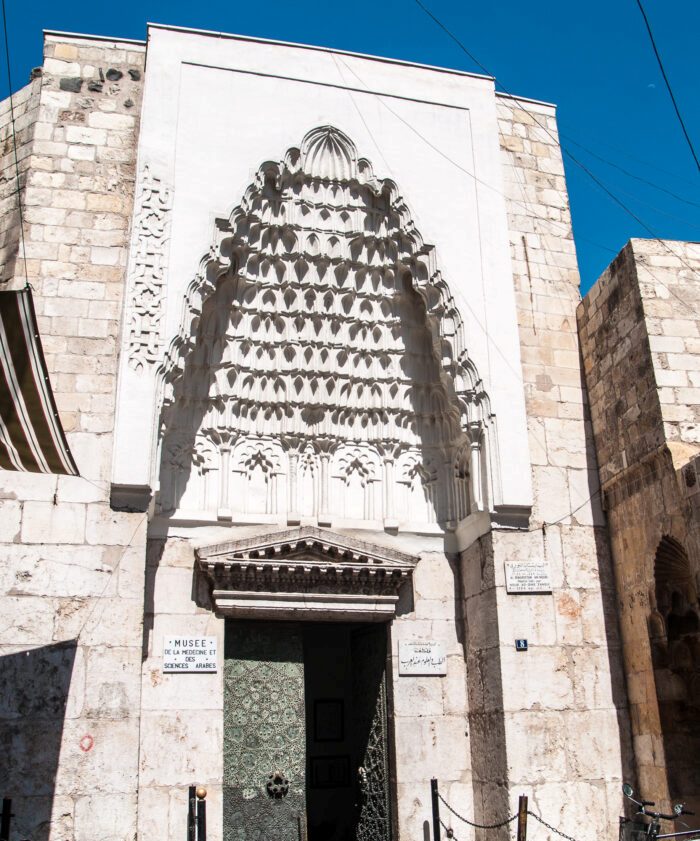
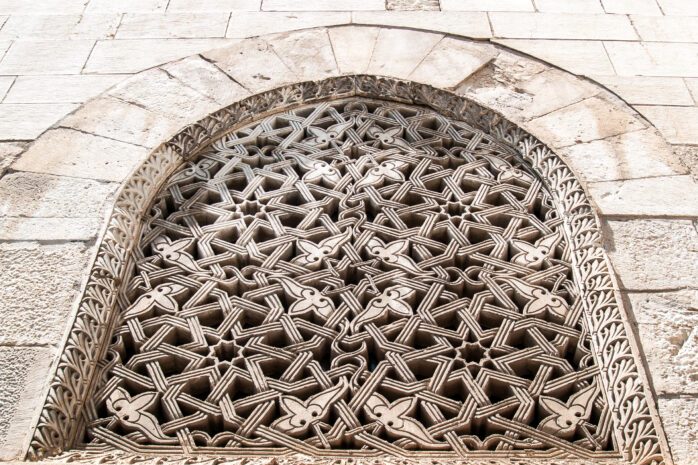
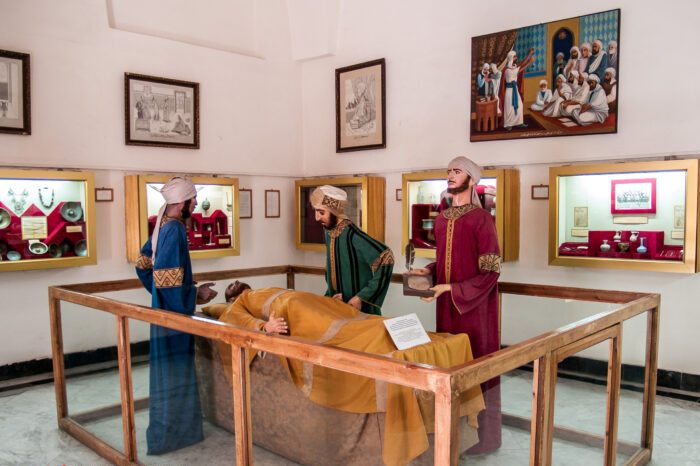
What to Expect When Visiting
Location and Accessibility
Al-Bimaristan al-Nuri is located in the al-Hariqa district, close to the famous Umayyad Mosque and Al-Hamidiyah Souq. This makes it an easy stop on a walking tour of Old Damascus.
- Address: Near Suq al-Buzuriyah, Al-Hariqa, Damascus
- Entrance fee: Usually free or symbolic (subject to change)
- Opening hours: Morning to mid-afternoon, but best to ask locally or go with a guide
Guided Tours
Some local guides in Damascus offer detailed tours that include Al-Bimaristan al-Nuri as part of a broader historical route. A guided visit is highly recommended to better understand the exhibits and stories behind the hospital.
Photography
Photography is generally allowed, but flash photography may be restricted in some parts of the museum. Be respectful and always ask if unsure.
Tips for Tourists
Best Time to Visit
- Morning visits are ideal to avoid the heat and crowds.
- Spring and autumn offer the most pleasant weather in Damascus.
Dress Modestly
As with many historical and religious sites in Syria, it is recommended to dress modestly—long pants or skirts, covered shoulders, and a respectful appearance are appreciated.
Take Your Time
Don’t rush through your visit. Take time to read the Arabic and English descriptions, examine the ancient tools, and absorb the unique atmosphere of a place that once healed thousands.
Combine with Nearby Attractions
Al-Bimaristan al-Nuri is located close to many of Damascus’s top sites. Consider visiting:
- Umayyad Mosque
- Azem Palace
- Straight Street (Via Recta)
- Al-Hamidiyah Souq
All within walking distance and deeply enriching experiences.
Why It Matters Today
A Forgotten Chapter of Medical History
Many travelers are surprised to learn that hospitals like Al-Bimaristan existed hundreds of years before similar institutions in the West. They were advanced, compassionate, and inclusive. In a world that often overlooks non-Western contributions to science and medicine, places like Al-Bimaristan al-Nuri are essential reminders.
Cultural Heritage and Preservation
Despite years of neglect and conflict, efforts are ongoing to preserve Al-Bimaristan as a cultural and educational landmark. Its survival through centuries of earthquakes, wars, and political upheaval is nothing short of remarkable.
A Symbol of Compassionate Care
The hospital’s founding principle—free treatment for all, regardless of status—echoes across time as a powerful model for humane healthcare.
Is It Safe to Visit?
As of recent years, Old Damascus has become more stable and open to visitors. However, always check travel advisories from your country’s foreign office before planning a trip to Syria. Going with a trusted local guide or agency is strongly advised, both for safety and for deeper cultural insight.
Final Thoughts
Al-Bimaristan al-Nuri is far more than just an old building. It is a living story of human care, intellectual advancement, and architectural brilliance. Whether you are a history lover, a medical professional, or simply a curious traveler, visiting this historic hospital offers a profound look into one of the most fascinating periods of Islamic civilization.
If you find yourself wandering the narrow streets of Old Damascus, don’t miss the chance to step into the cool stone halls of this timeless institution. You’ll walk away with not just photos, but a renewed appreciation for the deep roots of modern medicine.
Finally.. If you have any questions, please contact us. To explore further, visit our Facebook Syria collection for rare images and cultural highlights.
Sources & References:
UNESCO – World Heritage Centre: https://whc.unesco.org
Archnet – Architecture & Heritage Database: https://www.archnet.org
World History Encyclopedia: https://www.worldhistory.org
Syrian Heritage Archive Project: https://syrian-heritage.org
Global Encyclopedia: Wikipedia



